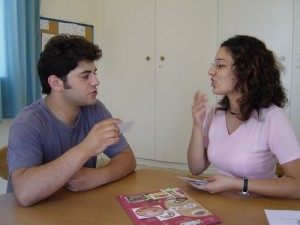Some types of lisps (frontal and dentalized) can arise during normal development. This is not the case with lateral or palatal lisps. When vocalizing the “s” and “z” sounds, a child with a lateral lisp directs air flow over the sides of the tongue, rather than straight down the middle of the tongue. This is often a result of incorrect tongue placement. Speech-language pathologist (SLP) Caroline Bowen notes that children with a lateral lisp often use a tongue placement for the “s” and “z” sounds that is quite similar to the tongue placement for an “l” sound.

